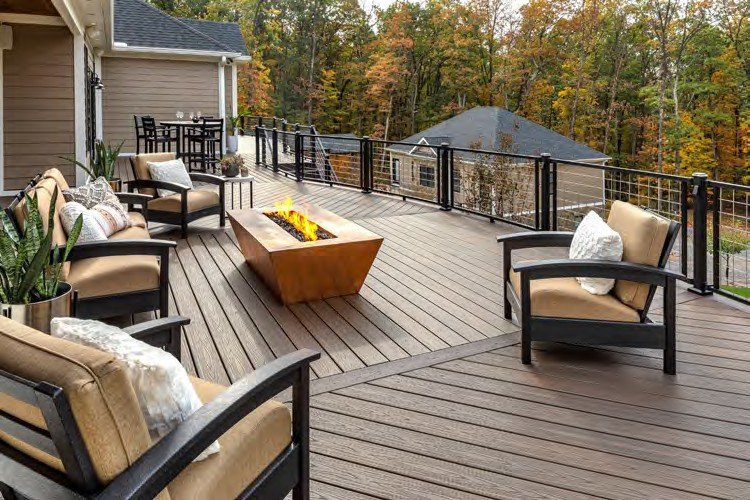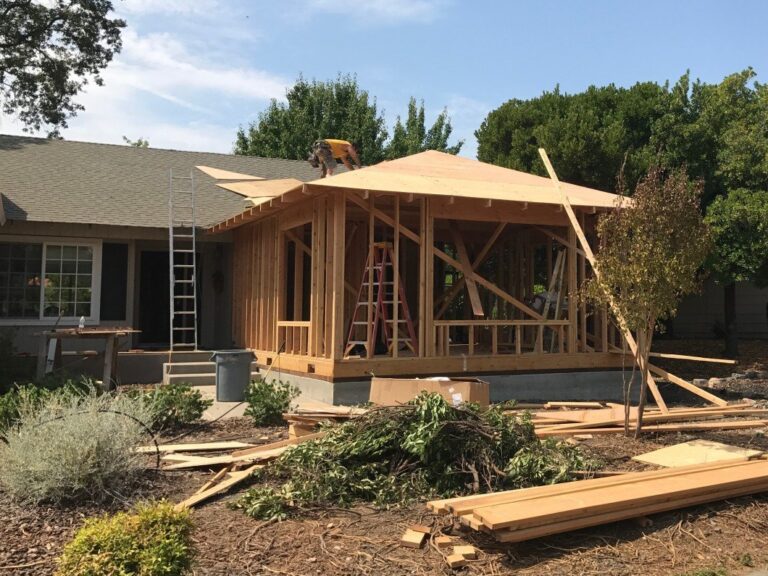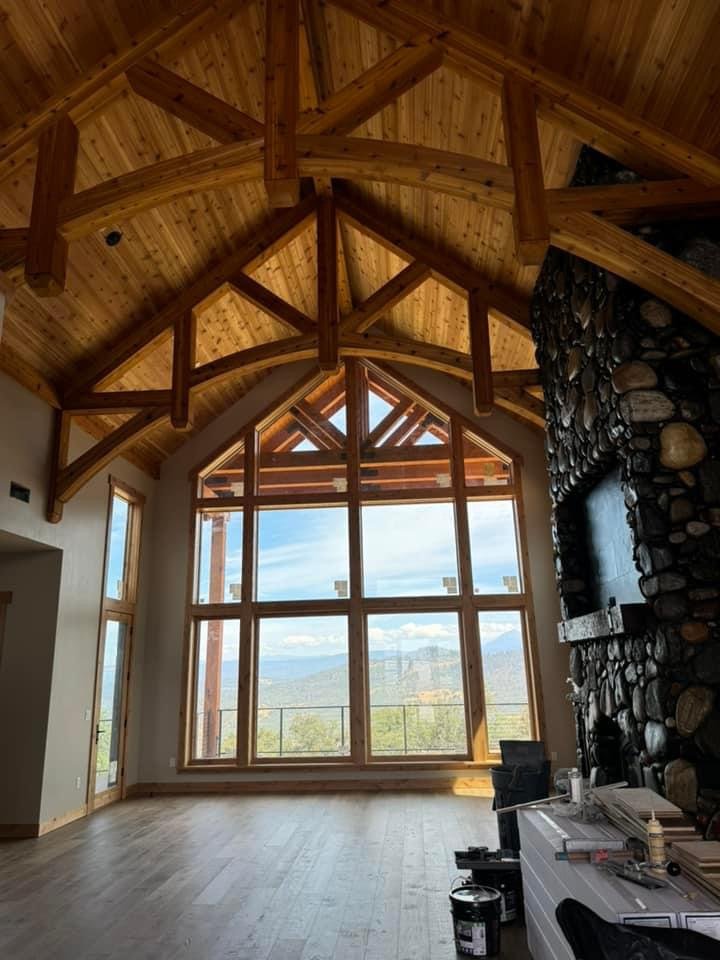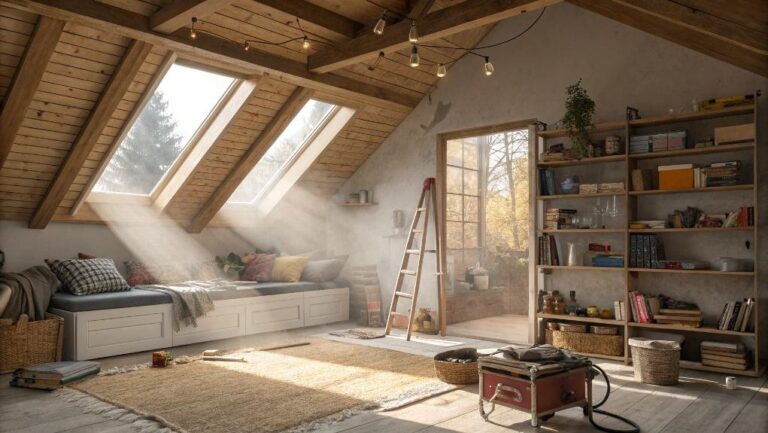How to Choose the Right Deck Material: A Comprehensive Guide
Building your dream deck is an exciting endeavor, but choosing the right deck material can be a complex issue. Your deck will be exposed to extreme weather conditions, moisture, and heavy foot traffic. With a wide range of decking materials available—each with unique characteristics and maintenance requirements—making an informed decision can feel overwhelming.
This guide will explore the different types of decking materials, including their pros and cons, to help you select the ideal deck material that fits your lifestyle, budget, and aesthetic preferences. Let’s help you choose the right deck material.
Understanding the Basics of Deck Design
Before diving into the different deck material options, consider your deck project requirements, including the size, location, and purpose of your outdoor deck. Whether you’re planning a small ground floor type deck or a multi-level outdoor oasis, the material you choose will impact the overall cost, durability, and maintenance needs of your decking project.
Common Types of Decking Materials
Several decking materials are popular choices for both residential and commercial decks. Let’s break down the most common types, along with their features and maintenance requirements.
1. Pressure-Treated Wood
Pressure-treated wood is a common choice for decking because it is affordable and widely accessible. This material is treated with chemicals to enhance its resistance to moisture, insect damage, and rot, making it a more durable option compared to ordinary lumber.
- Pros:
- Cheapest option for decking.
- Natural-looking deck with rich colors.
- Enhanced resistance to moisture and decay.
- Cons:
- Requires regular maintenance, including staining or sealing annually to maintain its color and integrity.
- Splinters and cracks over time.
- Susceptible to insect infestation if not properly maintained.
If you’re looking for a more traditional wood deck, a pressure-treated wood deck is a popular choice due to its natural appearance and upfront cost. However, be prepared for annual maintenance to prolong its lifespan and keep it looking beautiful.
2. Composite Decking
Composite decking is a synthetic decking material made from a blend of wood fibers and recycled plastics (and other recycled materials). This decking of composite offers a low-maintenance deck option with exceptional durability. Composite decking boards are available in a wide range of colors and finishes, mimicking the look of natural wood without the high maintenance costs.
- Pros:
- Requires minimal maintenance; no need for annual staining or sealing.
- Resistant to insect damage and rot.
- Available in a range of colors, allowing for creative deck design.
- Some brands offer hidden fastener systems for a clean look.
- Cons:
- Higher initial cost compared to pressure-treated lumber or natural wood.
- Can become hot in direct sunlight, especially in hot weather conditions.
- Quality varies between composite deck brands and composite options; choose a reputable composite decking manufacturer for the best results.
With composite decking materials, you’ll achieve a beautiful deck that requires minimal maintenance, allowing you more time to enjoy your outdoor space. Consider investing in high-quality materials to ensure long-term value for your deck project.
3. Exotic Hardwoods
Exotic hardwoods, like tropical hardwoods, are known for their natural durability and resistance to weather conditions. These woods, such as ipe, cumaru, and tigerwood, boast rich colors and natural tannins, which help protect them from insect damage and moisture.
- Pros:
- Exceptional durability; can last 25-50 years with proper care.
- Natural resistance to insect damage and rot.
- Offers a natural-looking deck with stunning rich colors.
- Cons:
- Expensive option due to its rarity and exotic origin.
- Requires regular maintenance to preserve its color.
- Can be difficult to work with; hiring an experienced deck builder is recommended.
If you’re willing to invest in a high-quality deck, exotic woods are an excellent choice for creating a luxurious outdoor space. However, be prepared for the upfront cost and the commitment to consistent maintenance.
4. Aluminum Decking
For a modern look and long-lasting deck, aluminum decking offers exceptional durability and minimal maintenance. Unlike wood decks, aluminum decks won’t warp, crack, or suffer from insect damage.
- Pros:
- Excellent resistance to weather conditions and insect infestation.
- Lightweight yet sturdy with high structural integrity.
- Low-maintenance; no need for staining or sealing.
- Cons:
- Higher initial price compared to most deck material options.
- Limited range of colors and designs compared to composite and natural wood decks.
- Can feel cold and less natural underfoot.
If you live in an area with extreme weather conditions and want a deck surface that will stand the test of time, aluminum decking is an ideal choice for its longevity and ease of maintenance.
5. Vinyl Decking
Vinyl decking, also known as polyvinyl chloride (PVC) decking, is another synthetic decking material that offers a maintenance-free decking project. It provides the look of natural wood without the hassle of annual maintenance.
- Pros:
- Completely maintenance-free; simply wash off dirt and debris.
- Resistant to insect damage and moisture.
- Available in a larger color palette to match various design styles.
- Cons:
- Higher material costs compared to pressure-treated wood.
- Can become slippery when wet.
- Lacks the organic feel of real wood.
For homeowners seeking a low-maintenance deck, vinyl decking is a durable and stylish option that adds to the long-term value of your home.
6. Composite Wood Decking
A popular choice for those who want the natural wood appearance without the maintenance issues, composite wood decking combines recycled wood fibers with polymer to create a strong, durable, and low-maintenance decking material.
- Pros:
- Excellent durability and resistance to moisture.
- Wide range of decking lines and colors to fit any deck design.
- Minimal maintenance requirements; just occasional cleaning.
- Cons:
- Initial cost is higher than natural wood but lower than exotic hardwoods.
- Limited natural color variation compared to wood decks.
Composite wood decking is the material of choice for those looking to build a deck space that requires little maintenance and provides a modern appearance. When choosing composite products, consider factors such as deck boards ratings and brand reputation to ensure quality.
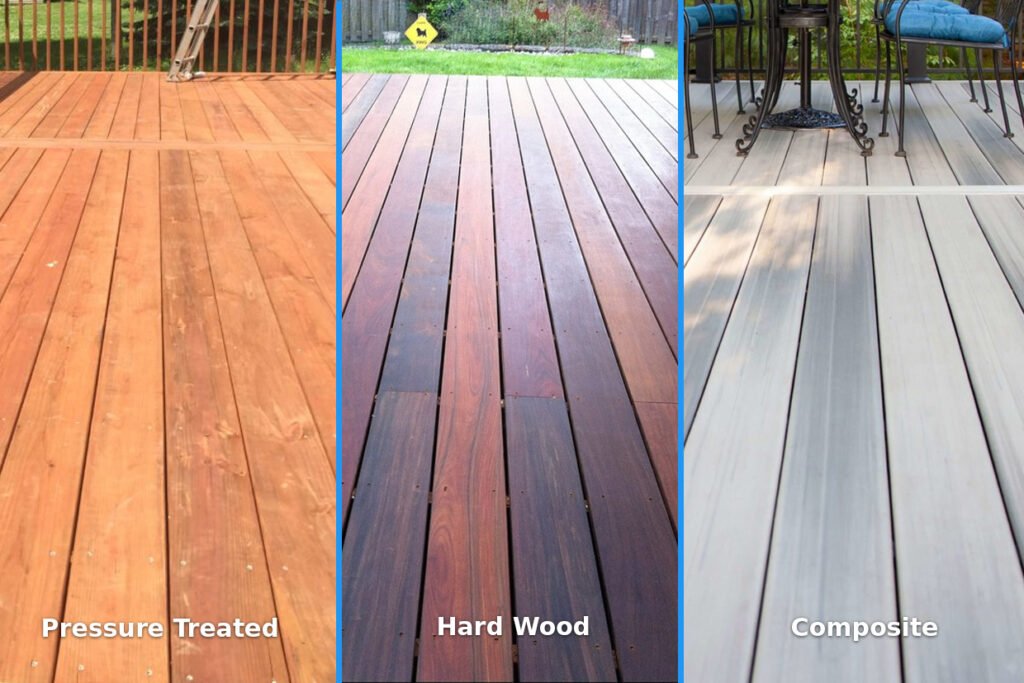
Making Your Choice: Considerations and Costs Over Time
When selecting the right decking material, it’s important to consider both upfront cost and long-term maintenance costs. A pressure-treated wood deck may be the cheapest option initially, but maintenance costs can add up over time. Alternatively, composite decking materials and vinyl decking have higher initial prices but offer long-term value due to their minimal maintenance requirements.
Tips for Choosing the Best Deck Material
- Budget: Determine how much you’re willing to invest in your deck construction. Consider both the initial cost and maintenance costs over the deck’s lifespan.
- Maintenance: If you prefer a low-maintenance deck, composite, vinyl, or aluminum decking are ideal options. Natural wood decks require more upkeep.
- Aesthetics: Choose a material that complements your home’s style and your personal preferences. Composite deck boards and exotic hardwoods offer a range of colors and finishes to suit various design visions.
- Durability: Consider the weather conditions in your area. If you live near a body of water or experience hot weather, select a deck material with excellent moisture resistance and insect damage resistance.
- Expert Advice: Consult a lumber expert or decking contractor to discuss your options and find the best decking products for your deck project.
Final Thoughts: Your Dream Deck Awaits
Choosing the right deck material is crucial in building a long-lasting and beautiful deck. Each type of decking material offers its own set of pros and cons, so weigh your options carefully. If you need further assistance in selecting and building your deck, we at LV Design & Build are here to help you create the perfect outdoor space tailored to your needs and preferences.
Ready to Start Your Deck Project?
Contact LV Design & Build today for a free consultation with an experienced deck project planner. Let’s turn your deck vision into reality with the perfect deck material suited for your home and lifestyle.
Your outdoor oasis is just a step away!
FAQ on How To Choose The Right Deck Material
What is the most affordable decking material?
Pressure-treated wood is the most affordable decking material in terms of initial cost. It offers a natural look and provides some resistance to insect damage and moisture. However, it requires regular maintenance, which can increase long-term costs.
Is composite decking worth the investment?
Yes, composite decking is worth the investment if you prefer a low-maintenance deck with exceptional durability. Although the initial cost is higher than traditional wood decks, the minimal maintenance requirements and long-term value make it a cost-effective choice over time.
How often should I maintain my wood deck?
A natural wood deck, such as one made from pressure-treated wood or exotic hardwoods, should be maintained at least once a year. This annual maintenance includes cleaning, staining, or sealing to preserve its color and protect it from insect damage and moisture.
Does composite decking get hot in the sun?
Composite decking can get warm in direct sunlight, especially during hot weather. However, some composite decking lines are designed with heat-reflective technology to minimize heat retention. Opt for lighter colors to keep your deck surface cooler.
Which decking material lasts the longest?
Aluminum decking and composite decking generally have the longest lifespan, with aluminum decks lasting 50+ years and composite decks lasting 25-30 years. These materials offer excellent resistance to moisture, insect damage, and weather conditions.
Can I use composite decking near water?
Yes, composite decking is a great choice for areas near a body of water because of its resistance to moisture and insect damage. Some composite products are specifically designed to withstand high humidity and constant exposure to water.
Is vinyl decking maintenance-free?
Vinyl decking is nearly maintenance-free. It does not require staining, sealing, or painting, and only needs occasional cleaning to remove dirt and debris. This makes it an excellent choice for homeowners seeking a low-maintenance deck.
How do I choose the best color for my deck?
Choosing the best color depends on your home’s exterior and personal preference. Composite decking boards and vinyl decking come in a wide range of colors, allowing you to match your deck design to your outdoor space. Consider your color palette, climate, and overall aesthetic when selecting a shade.

